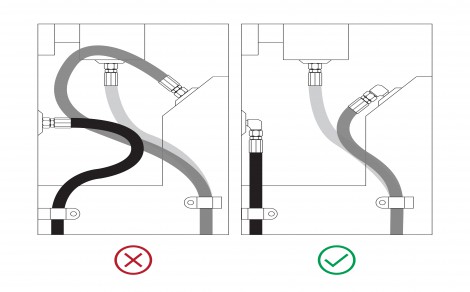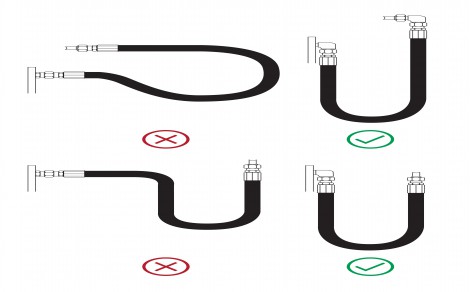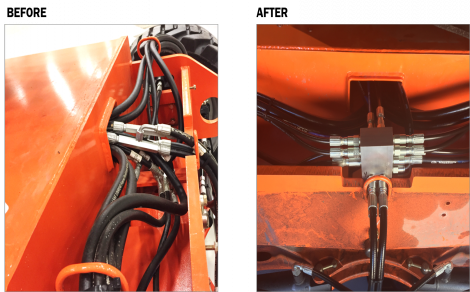- Home » Editorial » Hydraulics
Fluid power faux pas

By Cindy Cookson, vice president of hydraulics global product line management, Gates, shares her top five hydraulics system bloopers and some thoughts on what you can do to avoid the same mistakes in your applications.
Over the years, hydraulic hose and coupling system pressures have increased, and the loads on hydraulic systems are increasingly dynamic. Meanwhile, materials science and process technologies have improved the capabilities of hydraulic hose and coupling assemblies. Relying on “what you’ve always used” means you’re missing out on innovation and improvements in hydraulic hoses and couplings, but it could also mean that you’re compromising the safety of your hydraulic system.
Hose and coupling selections should be made based on system requirements and not just on a hose construction. We often hear, “I need a two-wire braid hose” or “my system needs a four-spiral hose”, but as OEMs have transitioned to isobaric hose ratings and hose manufacturers have innovated to deliver flexibility and weight savings in hydraulic hoses, referring to a hose by its construction is a risky move. Instead, Gates advises users to always follow system requirements for working pressure, temperature, and fluid compatibility when selecting hoses and couplings.
To make things easier, the STAMPED acronym is often used as a reminder of the aspects to consider when selecting a hose for a specific application. Here’s a brief explanation of the STAMPED acronym, extracted from Gates Safe Hydraulics course:
• Size – determine what ID hose is required for fluid flow. A hose that is too large will reduce system performance due to increased pressure loss and excessive system heat from excessive fluid turbulence
• Temperature – the hose must be capable of withstanding the system’s minimum and maximum fluid and ambient temperatures.
• Application – how and where the hose assembly will be used.
• Material/Media – the hose tube, cover and couplings must be compatible with the fluid being conveyed.

• Pressure – published hose working pressure must equal or exceed the normal system pressure, including pressure spikes.
• Ends – identify the termination and threads needed for the system to define the proper couplings and adapters.
• Delivery – determine the hose size needed to deliver the required fluid volume without losing pressure or adding unnecessary weight or bulk. Also consider requirements for how the hose and/or assembly is physically provided to the end application, including date required, special packaging, labelling or certifications.
Poor system routings
Hose assembly routings are a critical component of hydraulic system performance, both in an OE application as well as when hoses are replaced. Poor routings can lead to, in the best case, an under-performing hydraulic system with less system pressure than expected. A worse case would be faulty routing leading to costly downtime, and the worst-case scenario would be an unsafe working condition. Application engineering experts can diagnose your hydraulic system and recommend routings or system changes to improve system performance, and my Gates colleagues know from experience that these consultations usually reduce hydraulic system costs, too.

-
PPMA 2025
23 September, 2025, 9:30 - 25 September, 2025, 16:00
NEC, Birmingham UK -
Advanced Engineering Show 2025
29 October, 2025, 9:00 - 30 October, 2025, 16:00
NEC, Birmingham UK










